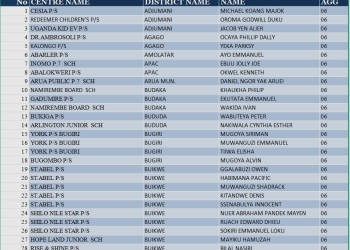
Large depositors of the defunct Mercantile Credit Bank Limited in Uganda are staring at potential losses of 50 to 60 percent on their uninsured funds. This situation has arisen due to significant challenges in loan recovery during the bank’s liquidation process, sparking widespread policy concerns and calls for government intervention to cushion affected customers.
The closure of Mercantile Credit Bank in June 2024 has left approximately 1,000 depositors, who represent 70 percent of the bank’s total deposits, at risk of losing a substantial portion of their savings. The Bank of Uganda (BOU) shut down the institution citing insufficient liquidity and its inability to meet the newly imposed minimum capital requirements for tier-2 credit institutions. These requirements, which took effect on June 30, 2024, mandated an increase in capital from Ush10 billion ($2.7 million) to Ush25 billion ($6.8 million).
Insufficient Deposit Insurance and Loan Recovery Challenges
In Uganda, the Deposit Protection Fund insures customer deposits up to Ush10 million ($2,702) held by commercial banks, tier-2 credit institutions, and micro-deposit taking institutions. Deposits exceeding this threshold are only recoverable through the liquidation of a bank’s assets. However, efforts to recover loans from Mercantile Credit Bank have been hampered, particularly due to substantial loans issued to its sister companies, including Victoria Motors Ltd, Victoria Engineering Ltd, and Victoria Pumps.
For example, Victoria Motors received loans to import vehicles, but selling these vehicles has proven difficult in a market dominated by used car imports. Such obstacles have limited the Bank of Uganda’s ability to generate sufficient funds to compensate depositors fully.
Partial Settlements and Asset Liquidation
To date, the BOU has managed to settle only 28 percent of the total value of uninsured deposits owed to the bank’s clients. Before its closure, Mercantile Credit Bank’s total assets were estimated to be between Ush300 billion ($81 million) and Ush400 billion ($108 million), while total deposits were valued at between Ush150 billion ($40.5 million) and Ush200 billion ($54 million).
Dr. Kenneth Egesa, BOU’s communications director, highlighted that many closed financial institutions in Uganda are insolvent, with liabilities exceeding assets. He emphasized that full settlement of depositors’ claims remains difficult but reassured the public of ongoing efforts to sell off the bank’s assets to compensate affected customers.
Concerns Over Financial Stability and Regulation
The fallout from Mercantile Credit Bank’s collapse has raised serious questions about the stability of Uganda’s financial sector and the adequacy of regulatory measures designed to protect depositors. In particular, the plight of those with large, uninsured balances underscores the need for stronger oversight and potentially expanded protections within the banking system.
The government’s response to this crisis is under scrutiny, with stakeholders calling for decisive action to restore confidence in the banking sector. For more insights into the issue, a video titled “Treasury defends Mercantile Credit Bank liquidation” provides additional context on the government’s perspective.
















